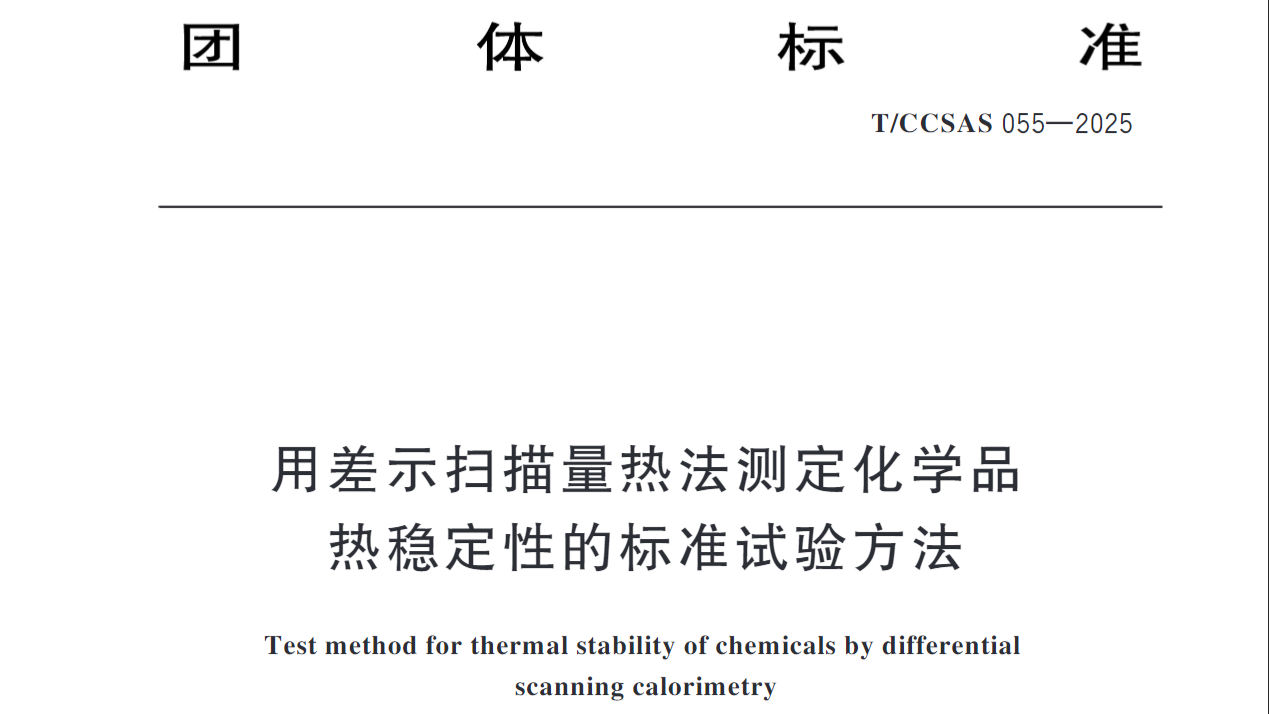“Test Method for Thermal Stability of Chemicals by Differential Scanning Calorimetry”Has Been Released and Implemented
Led by China Chemical Safety Association (CCSA), East China University of Science and Technology, Institute of Chemical Materials of China Academy of Engineering Physics, Forensic Science Identification Center of Shanghai Municipal Public Security Bureau, Suzhou Huace Safety Technology Co., Ltd., and Tianjin University compiled the group standard “Test method for thermal stability of chemicals by differential scanning calorimetry” (T/CCSAS 055-2025), which was released and implemented on March 3rd. The standard aims to standardize the testing process of Differential Scanning Calorimetry (DSC), ensure data accuracy, and provide a scientific basis for chemical process design, risk prevention and control, and compliance management.
This standard specifies the standard test methods for using DSC or high - pressure differential scanning calorimetry to measure the thermal stability of chemicals, including the instrument, materials, specimens, test procedures, test results, accuracy and safety matters. It is applicable to use closed high-pressure sample containers on solid, liquid or slurry substances to do the thermal stability test.
This standard supports the requirement in the “Code for Safety Risk Assessment of Fine Chemical Reactions” (GB/T 42300-2022) that thermal stability tests should be carried out for all chemicals and mixtures in the whole process of the chemical process; the test can be carried out by sealing solid, liquid or slurry samples in high-pressure containers for thermal stability testing; and specifically describes how to use a small amount of material to determine its enthalpy change and the methods and requirements for determining its enthalpy change (exothermic or absorptive) using calorimetry.
In view of the deficiencies of the existing DSC test standards in characterizing the thermal stability of chemicals and quantifying the heat of decomposition reaction of substances, this standard makes corresponding requirements in testing technology: 20% DTBP is recommended as the standard sample, and it is required to use a high-pressure crucible when measuring, so as to obtain more accurate and reliable data. In particular, glass capillary crucibles, which can significantly reduce the cost of test consumables, are recommended.
In addition, this standard also puts forward that the temperature of the same sample should be scanned twice: the first time to obtain the material thermal stability data, and the second time to obtain the integral baseline reference line. Experimental data illustrate that when initiating the DSC test of organic substances, the headspace atmosphere of air often introduces additional peaks of the reaction of the substance with oxygen. In order to eliminate the interference of these additional peaks on the implementation of the experiment, it is recommended to introduce an inert gas in the test process.
The release of this standard contributes to promoting the thermal stability test of chemicals in China into a new stage of standardization and internationalization. Through strict operation procedures, accurate data analysis and comprehensive safety protection, it provides a solid foundation for the safe development of the chemical industry.
